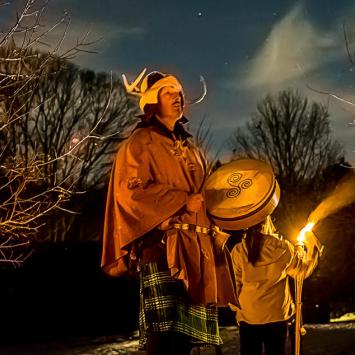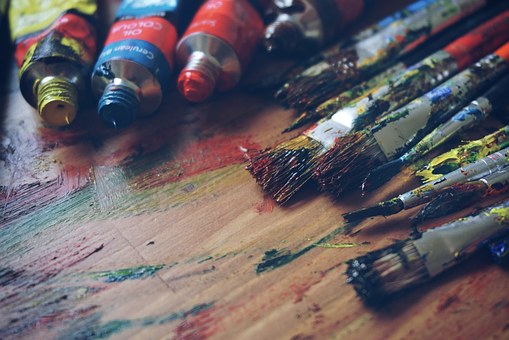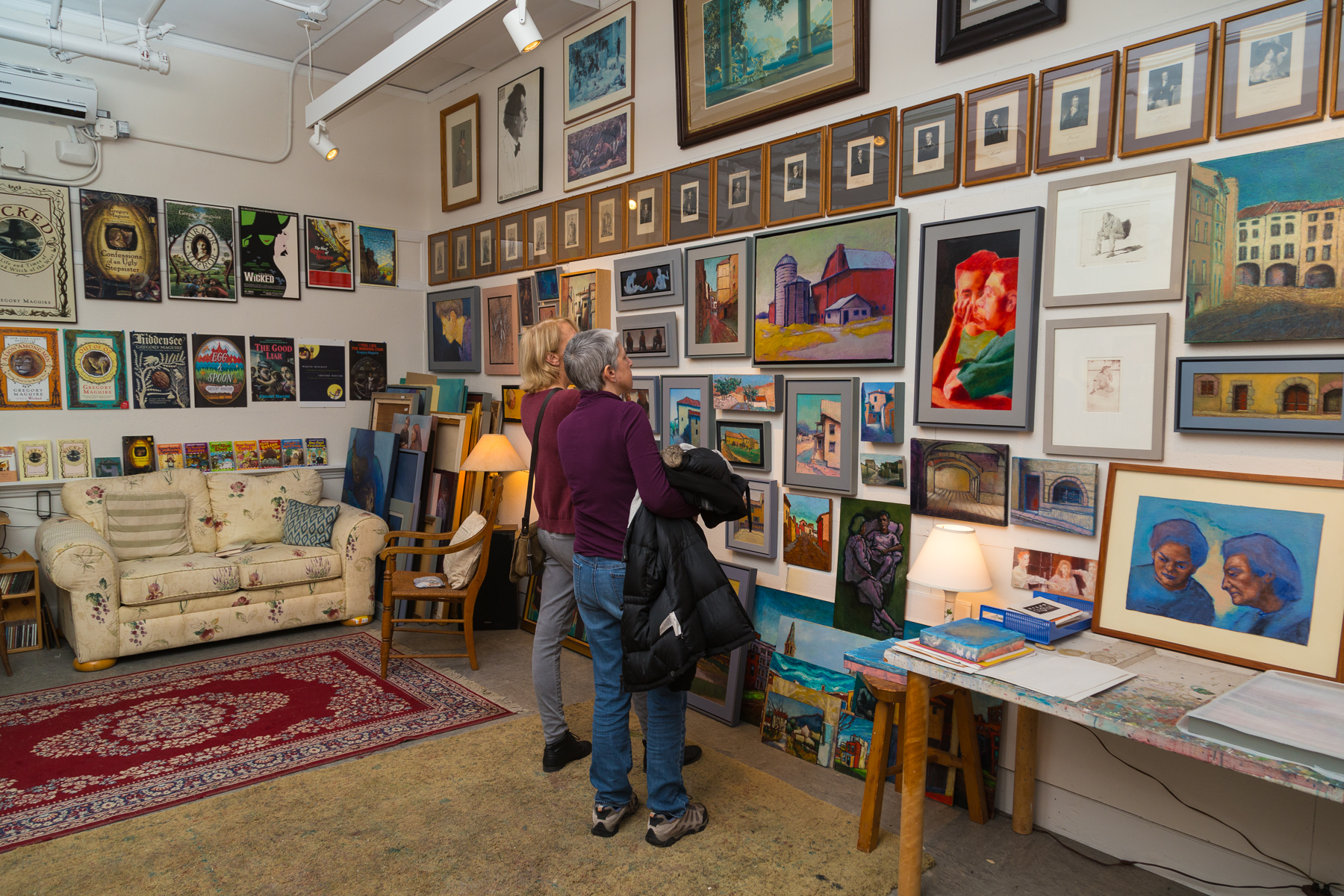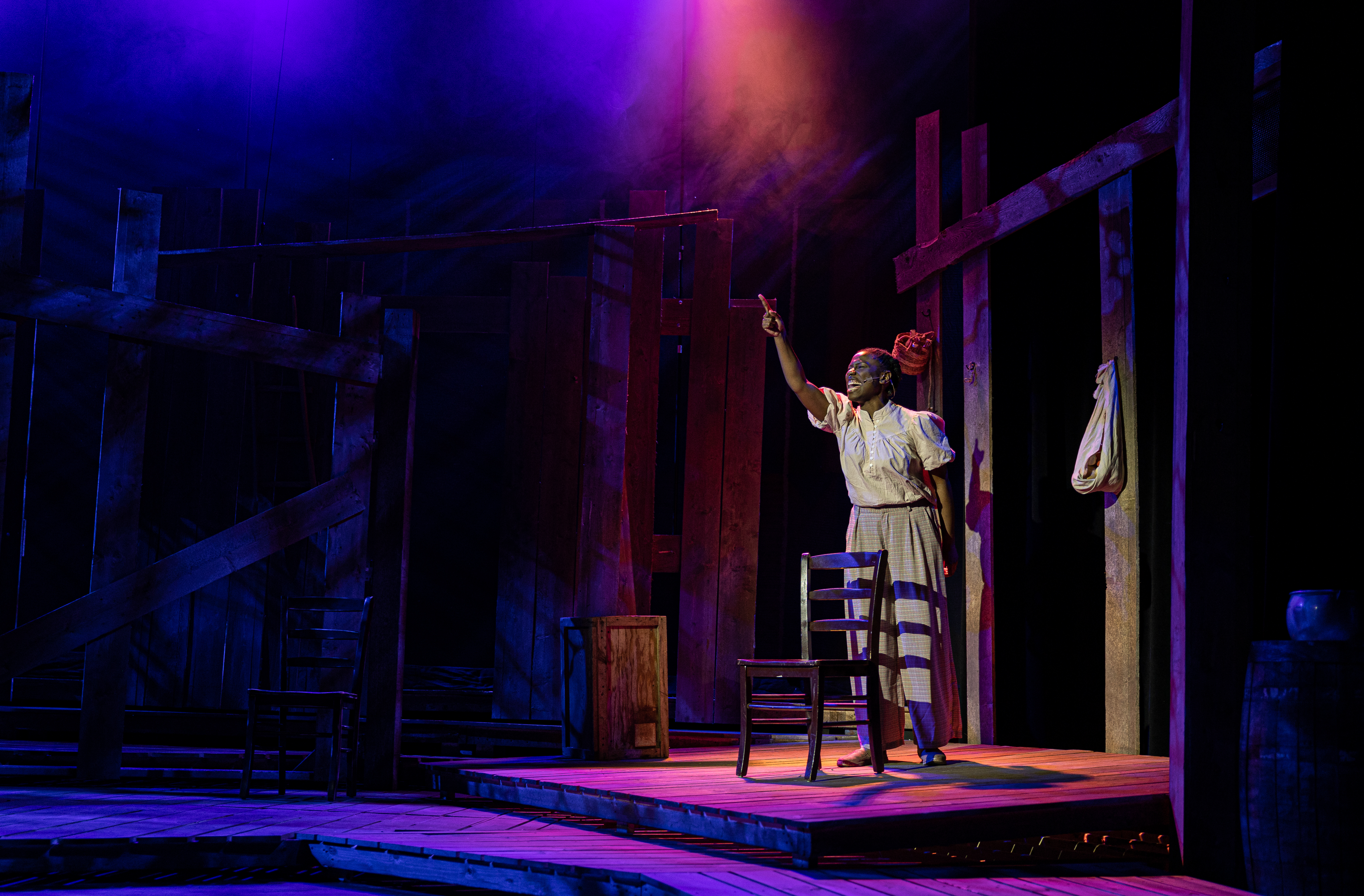David Smyth: An Artist Descended from Druid
April 11, 2018 by Admin

Written by Dan Kemp
David Smyth, artist, musician and teacher, is a member of The Umbrella Arts and Environment Program Steering Committee. He is instrumental in creating memorable celebrations for Musketaquid Earth Day and Solstice.
At The Umbrella’s Musketaquid Solstice Celebration this past winter, a wild-looking figure stood apart. He wore a kilt, cloak, and an antlered helmet, and he played a bodhran (an Irish drum). This was Concord artist, musician, and teacher David Smyth, and his dress expressed his deep bond with the ancient culture of his native Ireland. He will appear again at this year’s Musketaquid Earth Day Parade, River Ceremony, and Festival on Saturday April 28.
Dave’s connection to prehistoric Ireland began at age 11 with a field trip to Newgrange, a 5200-year-old Neolithic passage tomb and ceremonial site perfectly aligned with sunrise at the winter solstice. The tomb, which is older than Stonehenge or the Great Pyramids, appeared in medieval Irish mythology, but was thought to be fictional until rediscovered in the 17th century. Among the symbols carved into its rock face is the same triple spiral tattooed on Dave’s arm and painted on his bodhran.
The builders of Newgrange are often called Druids, but these were not the magicians of contemporary imagination. According to Dave, “Druidism is about having a connection to nature and having that connection to nature define your interaction with the world in general.” This world view aligns with beliefs of the Native American people whose presence lives in the land around us in Concord, and survives in indigenous cultures around the word. This world view is what Earth Day is all about.
Dave grew up in a working-class section of Dublin: a place with both opportunities and considerable dangers for a young boy, and a place to test the resolve of a teenager determined to dress and express himself in his own way. Music and art were always part of Dave’s life. After high school, a few years in the civil service convinced him that he could never be happy in an office job, so at 24, he came to the United States. He roomed with graduate student friends in New Jersey, at one point living in a walk-in closet because that was all he could afford. And then he met his wife, Anna, who would be constantly supportive at every step.
They moved to Boston, so Dave could attend Massachusetts College of Art and Design. After graduation, he taught art at schools in the Boston area, and eventually began singing full time with local Irish bands. With the first of three children on the way, they moved out to a house in West Concord. Dave stayed home to care for the children, while Anna pursued her career.
Art and history are intrinsically connected in Dave’s view. Art defines us as humans, and our earliest picture of humanity comes from Paleolithic cave paintings. “We as artists are the magicians: we make these tangible objects from stuff in our head. That’s what magic is about, that’s the creativity, that’s what the magic of being human is.”
Dave has done painting, carving, sculpture, and installation art. He taught himself how to create illuminated texts in the style of the medieval scribes. Some of his large-scale murals appear on the walls of Boston pubs, now he wants his art to have intrinsic meaning. Frequently using mythological themes, his work expresses a linkage to his distant Irish forebears and to the commonality and continuity of human experience. He has based a carving and paintings on the oldest Irish poem, Buile Suibhne or Sweeney Astray, in which an arrogant secular king is cursed by a priest and forced to spend the rest of his life as half man and half bird, exposed to wind and weather, drifting among the wild places of Ireland and Scotland, and composing poems as he wanders.
For several years Dave has taught in Arts & Environment’s after-school and vacation camp programs, which celebrate nature through art. This might mean creating artistic pieces using natural materials, addressing natural subjects with conventional art materials, or going out in the woods to collect materials and observe nature. In the multi-day vacation camps, sessions may be built around a narrative: telling stories, creating dioramas, or making puppets, all building toward a celebratory event such as a play or parade. He finds that too many children arrive lacking the tactile sense that comes from working with physical materials. This is something Musketaquid aims to change.
Dave also works with middle-school students building sets for the school play, where he sees the joy and empowerment the students find in using tools to make a physical product for the first time.
He strongly believes that we carry memories of ancient people in our DNA, and our lives involve repetitions of the past. He recently wrote a story that encapsulates his spiritual and artistic philosophy. It tells of a salmon from her hatching to her return to her birthplace after many years in the ocean. On her way, she discovers a pearl of great wisdom, but doesn’t understand it until the very end of her life. Last year at a vacation camp session, Dave’s 15-year-old son, Dylan, worked with his father and the campers to turn this story into a play. Not long afterwards, Dave would read the story at the memorial service following Dylan’s death in a tragic accident. Now the evolution, illustration, and possible publication of the salmon’s story are on Dave’s mind as he tries to find meaning after losing Dylan. And he remembers the wisdom the salmon found: “We are all on the same journey.”






